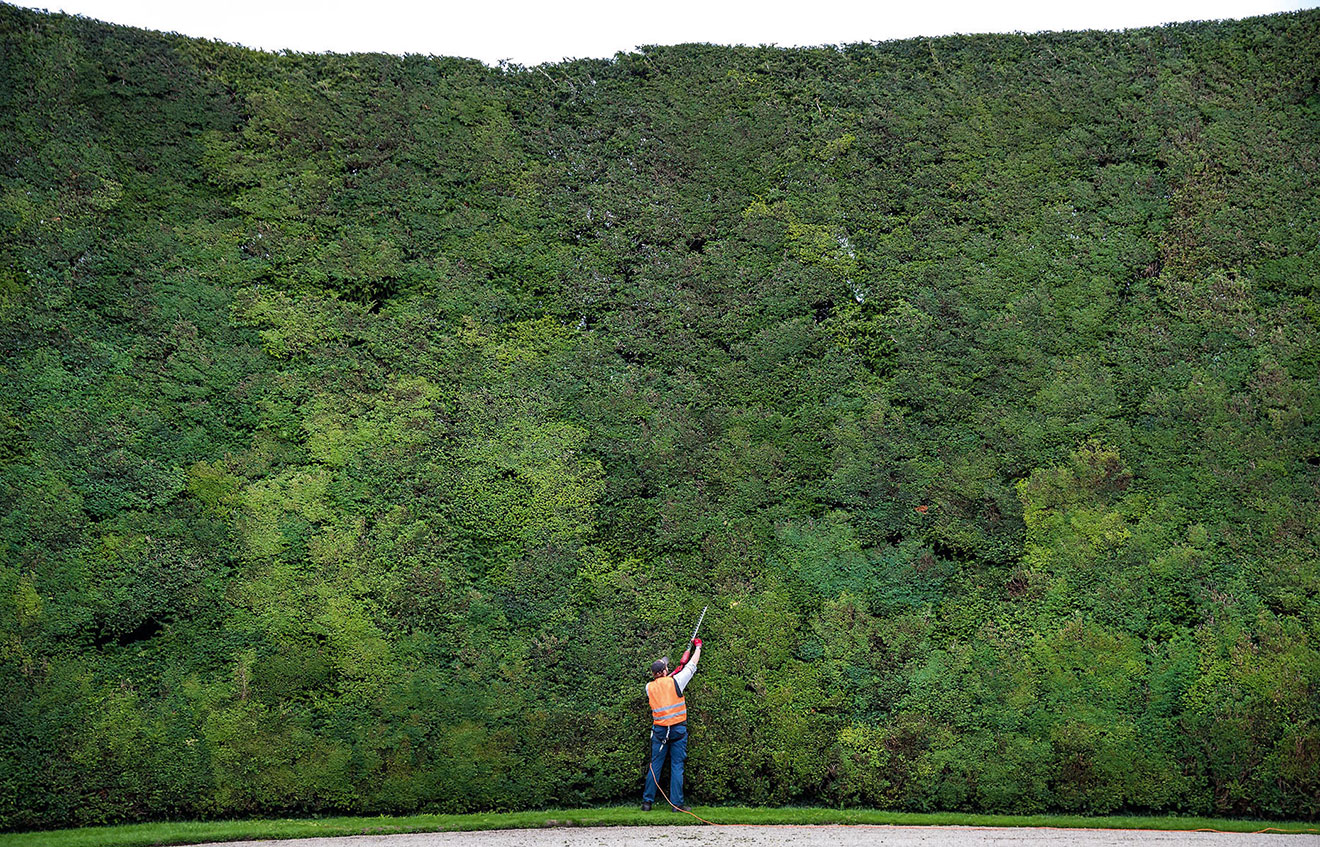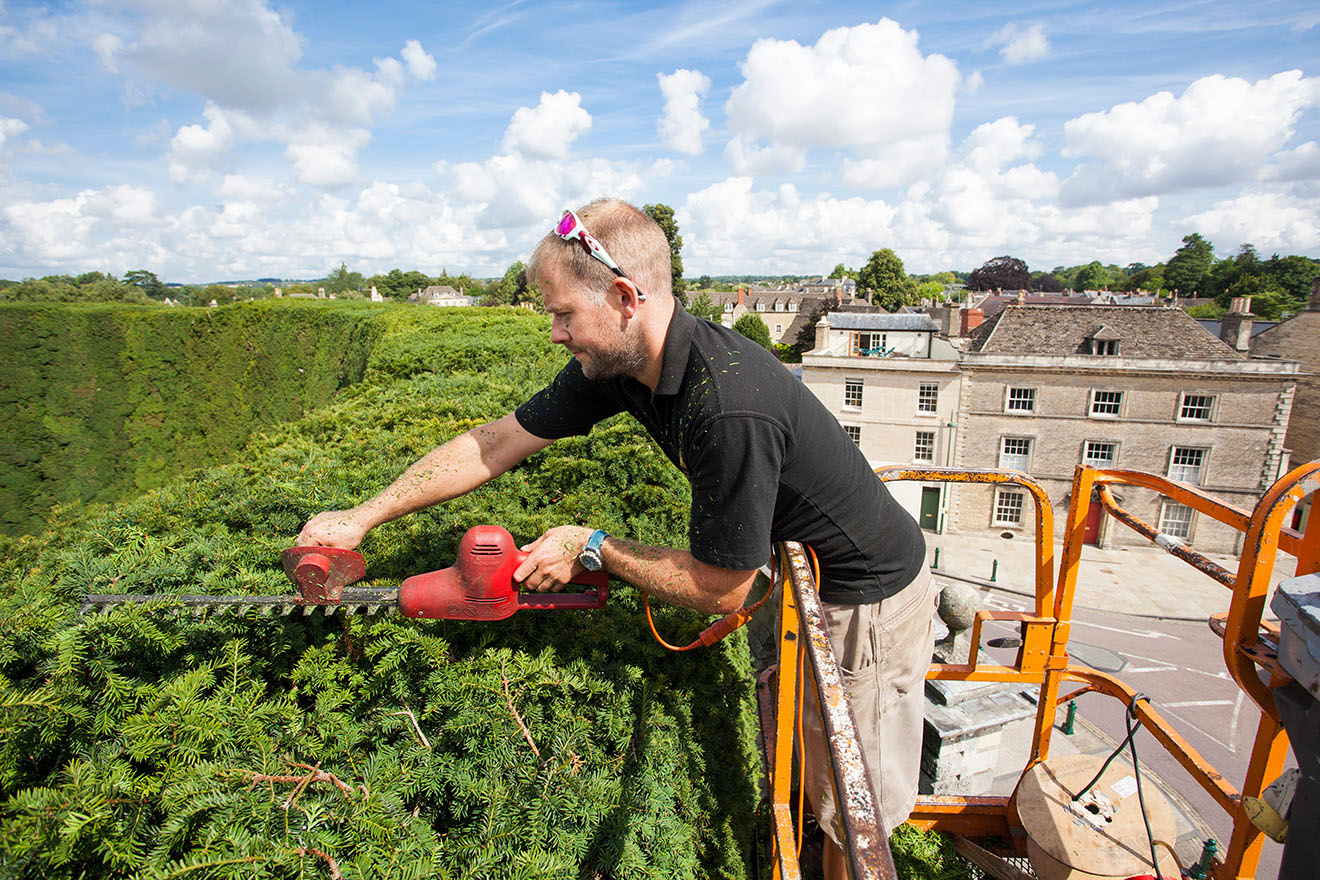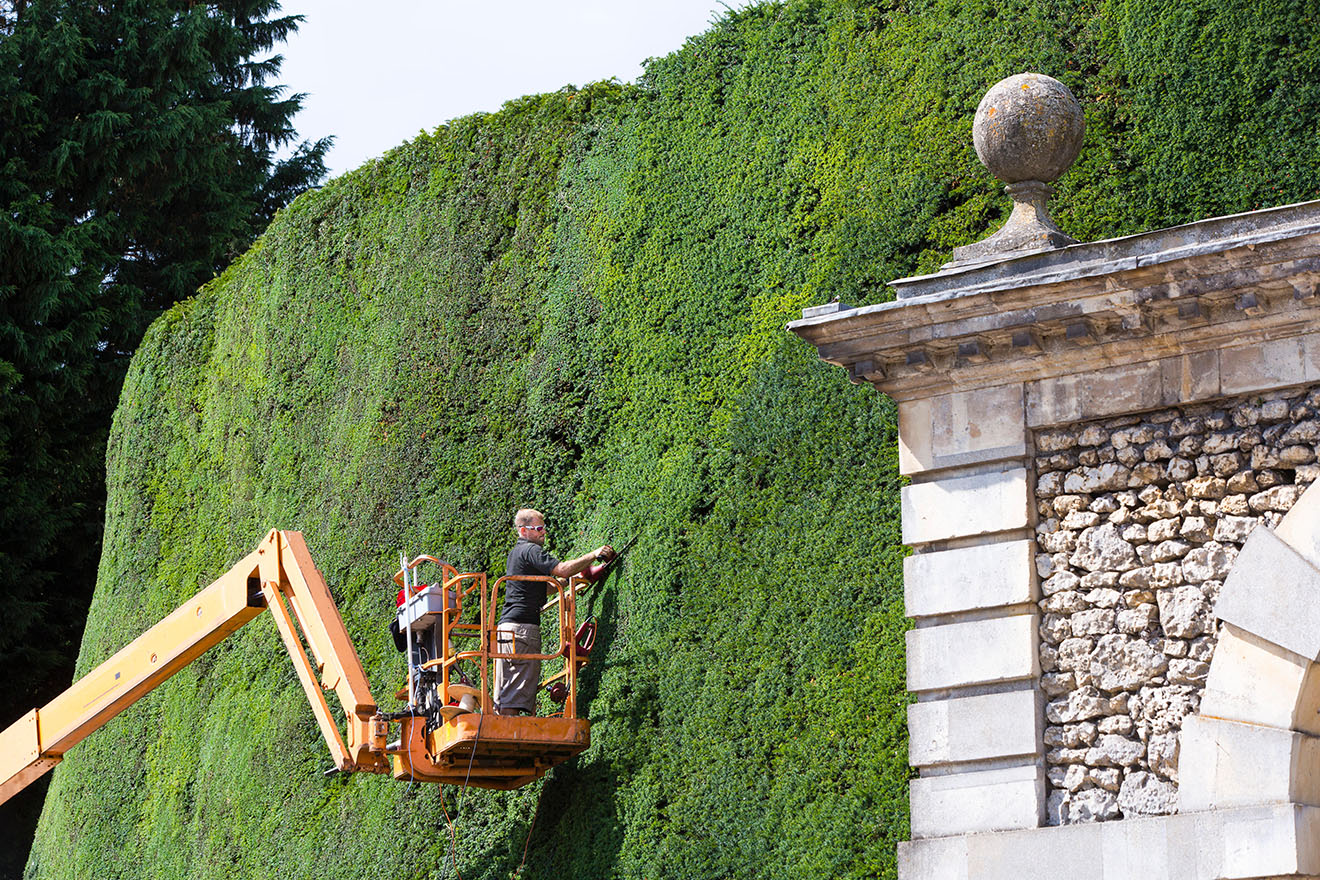300 years old, 40ft tall, 30ft wide: The world’s largest yew hedge has just received its annual trim
August is hedge-trimming season on the Bathurst Estate, in Cirencester.


The world’s tallest yew tree hedges stands proud on the Bathurst Estate in Cirencester — where it’s been a striking feature for more than 300 years. The green giant was planted in about 1710 by Allen Bathurst, son of Sir Benjamin Bathurst. Today, it comes in at around 40ft tall and 30ft wide at the base, tapering to 12–15ft at the top, in the classic A-shape that the current 9th Earl Bathurst prefers for strength and stability.

Precision in progress — August trims keep the hedge in peak form.
Once a traditional Elizabethan house, Cirencester Park was remodelled in the early 18th century, with the hedge planted soon after — its original purpose unknown, though today it muffles the sounds of nearby traffic and delights visitors. Lord Bathurst notes that yew trees can live for thousands of years, so this imposing green wall is still, in botanical terms, a ‘baby’.
Over the centuries, the hedge has picked up a few of its own stories — including one oft-repeated local rumour that German pilots used it as a landmark during bombing missions in the Second World War, and that it went untrimmed for a time in an attempt to hide it. Lord Bathurst is quick to stress that he doesn’t believe the tale.

Trimming takes: two men, 10 days, one hydraulic lift.
In late summer, the hedge also produces small, bright red yew berries. The fleshy outer part is edible and surprisingly sweet, but the seed inside is highly poisonous, and potentially lethal, to humans and livestock. Birds — and even badgers — happily eat the berries, passing the seeds through their digestive systems and helping the yew spread naturally.

A hedge older than the USA.
The hedge grows up to a foot each year (less in drought years) and is trimmed every August. Gone are the days of three men perched on 60ft ladders with shears; modern hydraulic platforms have transformed the job. Even so, it still takes two men about 10 days to complete the work, producing roughly a tonne of clippings annually. Once sold for use in the cancer drug Taxol, the trimmings are now carefully disposed of due to their toxicity to livestock. If you stay in one of the estate’s holiday cottages and book in early August, you might be lucky enough to see the hedge-trimming process in action — as long as you have the required Day Pass.

A green curtain clocking Cirencester for three centuries.
Wildlife finds refuge here too — from nesting pigeons (a mixed blessing) to mice, foxes, and even deer seeking shelter in winter.
Access to Cirencester Park requires a Pass. Visitors must hold one of three types of entry passes — Day Pass, Annual Pass, or a Community Pass (for local residents in certain GL7 postcodes) — to access the gated parkland during designated hours. The Old Kennels and Jubilee Community Arboretum are accessible without a Pass
Exquisite houses, the beauty of Nature, and how to get the most from your life, straight to your inbox.
Florence is Country Life’s Social Media Editor. Before joining the team in 2025, she led campaigns and created content across a number of industries, working with everyone from musicians and makers to commercial property firms. She studied History of Art at the University of Leeds and is a dachshund devotee and die-hard Dolly Parton fan — bring her up at your own risk unless you’ve got 15 minutes to spare.
